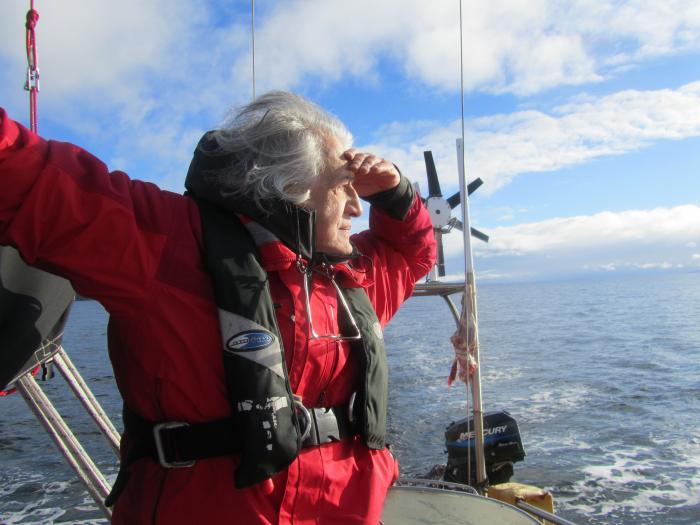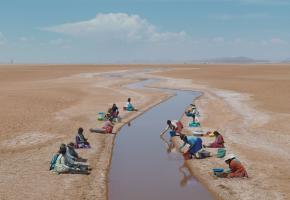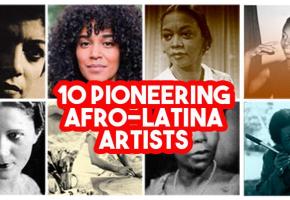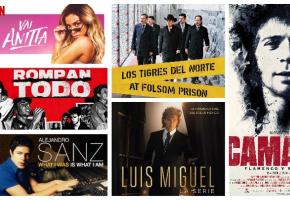All students of Latin American cinema will study Guzman at some point. Since his 1979 masterpiece, The Battle of Chile, a three part, 5-hour documentary about Pinochet's coup of 1973 that ended the elected Socialist President Salvador Allende’s government, his films have been fundamental to people’s knowledge about Latin America – Europeans, Americans and also Latin Americans themselves.
In November 1973, after the coup, Guzman was forced to leave Chile and lived in exile in Cuba, Spain and France. His story and those in his films, about the struggle against oppression, are highly personal but also universal – leaving a lasting impression. There is no doubt that most modern day documentary filmmakers, including the brilliant Asif Kapadia who made Senna and then Amy, will have been influenced by this master story teller and his poetic approach to reality.
Guzman’s films have confronted head on issues that Latin American governments, not least to say Chile’s own, would rather sweep under the carpet, but their beautiful cinematography and crafting – navigating between political, human, philosophical and natural landscapes – had a profound impact on international audiences that deemed this impossible. It is rare also to find such poetical approach to such brutal subjects and their highly political message.
The last time we interviewed Guzman was after his acclaimed 2012 film Nostalgia de la Luz (Nostalgia for the Light) which was set in the northern Atacama, the driest place on earth where giant telescopes aim at the stars to discover the origin of the universe, anthropologists search for mummies, and women dig the soil to find the disappeared of the Pinochet dictatorship. In El Botón de Nácar (The Pearl Button) Guzman’s focus has moved to the southern waters.

Can we think El Botón de Nácar as a sequel of Nostalgia de la luz? Some specific references seem to suggest that.
It is a diptych, and it will become a trilogy because the third film I’m going to make is also similar to them. It is one way of reflect about Chile starting from the two extremes, north and south, and the mountain range that is the wall that divides America, and separates Chile from the world in this case. The three films reflect on the Chilean people, about the tragedies that have befallen the country, about its future, so the three are similar in their approach and subject matter.
Are the mountains the main geographical setting of the third film?
The Andes divide all the territory, they are a boundary and Chileans pass over them when they go to Europe, the U.S. or other countries, but they return and take cover. The Andes are a sort of wall that encloses them and isolates them. I think we Chilean people like to be in the situation of isolation behind the mountain range that is very high.
In Chile the sun raises well after dawn, more than an hour later because the mountains prevent it. They are a very strong natural barrier, which is penetrated by ideas, but which people also use as protection. So, it has allowed a specific way of life, and also some ideas have been stopped. That is the dilemma Chile faces. It is a modern country and is also archaic, and I’m interested in that.
This suggests that not only the historical processes but also the geography has been influential in how Chileans are.
Yes. I think as you do. There is a political history very clear, the fascism that existed in the country, and also this particularity of living in this straight ledge, 70km wide that in thousands of years will disappear. It is very strange living there. So I’m excited about talking about this ledge where we live because it is a unique situation in America.
At a time when many consider the present the most important moment in your film do you think the past is what is essential?
From an astronomic point of view we can only see the past. There is nothing present, not even the sunlight. Everything reaches us with a delay and everything we know about the universe comes from hundreds and thousands of years ago. In the same way, when you recall your life, at the very moment you’ve decided to call me, it was already past. So all your life takes place in the past, every single moment you may remember. Today you can act and have a space to do things but this will vanish soon and it will be past. The march of time is so fast that we only live in a short moment that is present and the rest is a past that grows bigger all the time. That’s why it is so important to study it to know what could happen in the future to us. The past is the key to our future.
The problem of time is obviously linked to that notion of memory. What is today the situation of the historical memory in Chile?
What happens with memory in Chile is that some people are conscious of what happened, what it meant, what the projections were at that time, and where are we standing now. There is also another sector who says that we have to forget the past entirely, that we need to head towards the future, to work, to build specific companies or cities or extract a specific raw material. So, they deny the past because they think the future is what is most important.
Obviously I won’t deny the future is very important and we depend on it, but if we don’t have a conscience more or less clear or what Chile’s gone through, what happened, what presidents we’ve had, what tragedies we’ve lived or what the historical processes have been through we won’t reach anywhere. Without learning that, it is impossible to move forwards, you move blindly, wth no real direction. And those who think like that are the people from the right, people who don’t want to accept the hideous tragedies Chile has lived and I am against it. I believe we need to remember everything to move forwards, or we won’t get anywhere.
Could you say more about what the two stories of El botón de nácar have in common?
Water and crime, because what happened to the indigenous peoples in the south is a massacre organised and carried a group of people who decided to conquer that area with mercenaries with guns to eliminate and remove anyone who was a nuisance for the cattle they expected to farm there.
This was a mass murder with gunmen brought mainly from Argentina and Chile to annihilate them. And those who remained alive, like women and children, were sent to the missions in some of the islands which were also another prison. The missionaries dressed the native people with European cloths that came contaminated with diseases, most died in the following 40 years, peoples who had lived there during thousands years.
This tragedy is similar to the 2 thousand people that Pinochet threw into the sea from helicopters thirty years ago. So history is repeating itself, the country is barbaric despite the culture we’re supposed to have. That’s why I brought the two stories together, because the practice is the same: to get rid of those who are a nuisance.
What impressions can you share with us one year after the original release of El botón de nácar?
We’ve had very good critics in France, Belgium, the U.S., Chile, and other countries where it has been released. In France it reach an audience of 84,000 people, which is a great success for a documentary film.
For info and screening click here

















